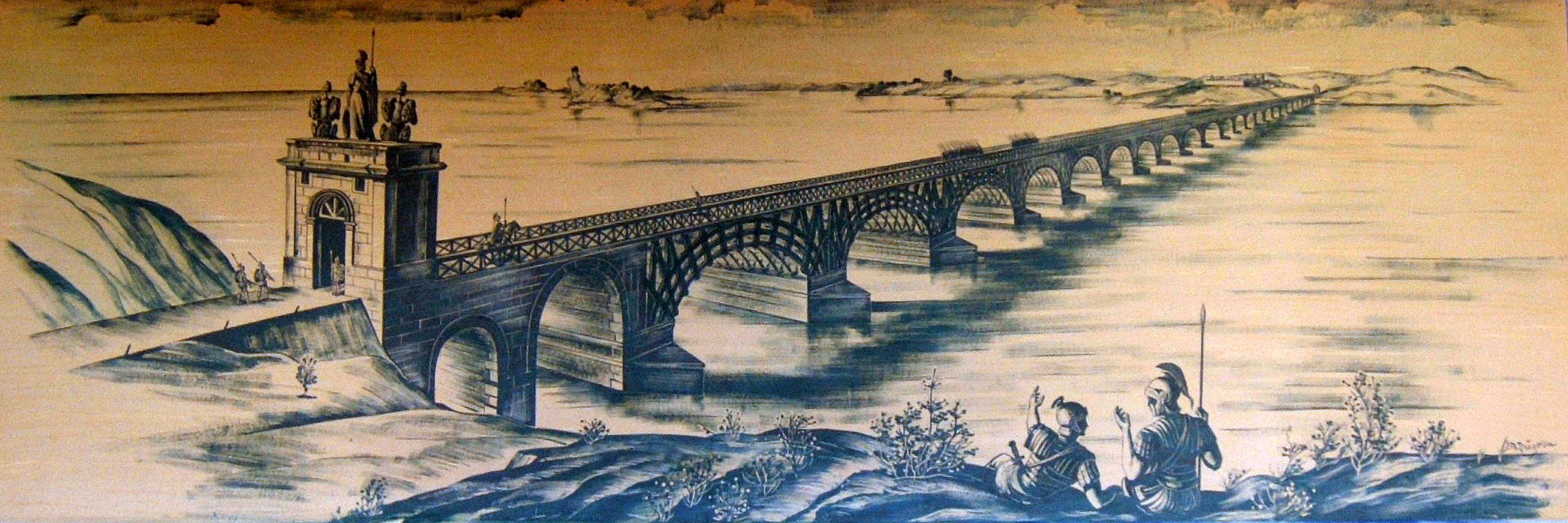AD 104 on:
[Wikipedia]
[Google]
[Amazon]
Year 104 ( CIV) was a leap year starting on Monday (link will display the full calendar) of the
 * Pliny the Younger continues as a member of the College of Augurs (103–104).
* Nijmegen is renamed ''Ulpia Noviomagus Batavorum''.
* A fire breaks out in
* Pliny the Younger continues as a member of the College of Augurs (103–104).
* Nijmegen is renamed ''Ulpia Noviomagus Batavorum''.
* A fire breaks out in
Julian calendar
The Julian calendar, proposed by Roman consul Julius Caesar in 46 BC, was a reform of the Roman calendar. It took effect on , by edict. It was designed with the aid of Greek mathematicians and astronomers such as Sosigenes of Alexandri ...
, the 104th Year of the Anno Domini
The terms (AD) and before Christ (BC) are used to label or number years in the Julian and Gregorian calendars. The term is Medieval Latin and means 'in the year of the Lord', but is often presented using "our Lord" instead of "the Lord" ...
(AD) designation, the 104th year of the 1st millennium
File:1st millennium montage.png, From top left, clockwise: Depiction of Jesus, the central figure in Christianity; The Colosseum, a landmark of the once-mighty Roman Empire; Kaaba, the Great Mosque of Mecca, the holiest site of Islam; Chess, a ...
, the 4th year of the 2nd century, and the 5th year of the 100s decade. At the time, it was known as the Year of the Consulship of Suburanus and Marcellus (or, less frequently, year 857 '' Ab urbe condita''). The denomination 104 for this year has been used since the early medieval period, when the Anno Domini
The terms (AD) and before Christ (BC) are used to label or number years in the Julian and Gregorian calendars. The term is Medieval Latin and means 'in the year of the Lord', but is often presented using "our Lord" instead of "the Lord" ...
calendar era
A calendar era is the period of time elapsed since one '' epoch'' of a calendar and, if it exists, before the next one. For example, it is the year as per the Gregorian calendar, which numbers its years in the Western Christian era (the Coptic ...
became the prevalent method in Europe for naming years.
Events
By place
Roman Empire
 * Pliny the Younger continues as a member of the College of Augurs (103–104).
* Nijmegen is renamed ''Ulpia Noviomagus Batavorum''.
* A fire breaks out in
* Pliny the Younger continues as a member of the College of Augurs (103–104).
* Nijmegen is renamed ''Ulpia Noviomagus Batavorum''.
* A fire breaks out in Rome
, established_title = Founded
, established_date = 753 BC
, founder = King Romulus ( legendary)
, image_map = Map of comune of Rome (metropolitan city of Capital Rome, region Lazio, Italy).svg
, map_caption ...
.
* Trajan gives the order to have the Alcántara Bridge, constructed by the architect Lacer, built over the Tagus River at Alcántara
Alcántara is a municipality in the province of Cáceres, Extremadura, Spain, on the Tagus, near Portugal. The toponym is from the Arabic word ''al-Qanṭarah'' (القنطرة) meaning "the bridge".
History
Archaeological findings have atteste ...
(Hispania
Hispania ( la, Hispānia , ; nearly identically pronounced in Spanish, Portuguese, Catalan, and Italian) was the Roman name for the Iberian Peninsula and its provinces. Under the Roman Republic, Hispania was divided into two provinces: Hi ...
).
* Apollodorus of Damascus builds a stone bridge over the Danube more than long, almost high and wide. The bridge connects what is now Serbia
Serbia (, ; Serbian: , , ), officially the Republic of Serbia ( Serbian: , , ), is a landlocked country in Southeastern and Central Europe, situated at the crossroads of the Pannonian Basin and the Balkans. It shares land borders with Hu ...
with Romania
Romania ( ; ro, România ) is a country located at the crossroads of Central Europe, Central, Eastern Europe, Eastern, and Southeast Europe, Southeastern Europe. It borders Bulgaria to the south, Ukraine to the north, Hungary to the west, S ...
(at the time known as Dacia
Dacia (, ; ) was the land inhabited by the Dacians, its core in Transylvania, stretching to the Danube in the south, the Black Sea in the east, and the Tisza in the west. The Carpathian Mountains were located in the middle of Dacia. It ...
).
By topic
Religion
* InIndia
India, officially the Republic of India (Hindi: ), is a country in South Asia. It is the List of countries and dependencies by area, seventh-largest country by area, the List of countries and dependencies by population, second-most populous ...
, figures of Buddha
Siddhartha Gautama, most commonly referred to as the Buddha, was a wandering ascetic and religious teacher who lived in South Asia during the 6th or 5th century BCE and founded Buddhism.
According to Buddhist tradition, he was born in L ...
replace abstract motifs on decorative items.
Births
* Chen Shi, Chinese politician and official (d. 187) *Gaius Appuleius Diocles
Gaius Appuleius Diocles (104after 146 AD) was a Roman charioteer. His existence and career are attested by two highly detailed contemporary inscriptions, used by modern historians to help reconstruct the likely conduct and techniques of chariot ...
, Roman charioteer
Deaths
References
{{DEFAULTSORT:104